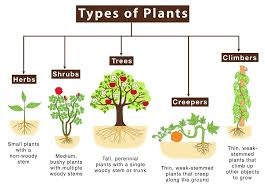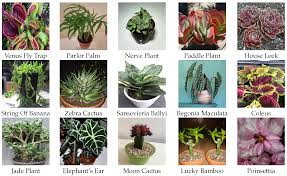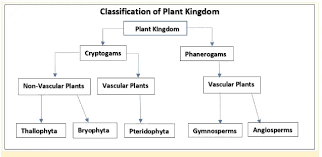Plant classification is the method by which scientists group and categorize plants based on shared characteristics. This system helps us understand the vast diversity of plant life on Earth. By organizing plants into specific groups, classification makes it easier to study, identify, and communicate about different species.
Whether you’re a botanist, gardener, or just someone interested in plants, understanding plant classification provides a foundation for learning more about the natural world.
Historical Development of Plant Classification
The practice of classifying plants dates back thousands of years, evolving significantly over time. Here’s a brief look at the historical development of plant classification:
1. Early Classification Systems: The earliest classification systems were simple and based on observable characteristics like leaf shape, plant size, or whether a plant was useful for food or medicine. Ancient civilizations, including the Greeks and Romans, developed rudimentary systems to categorize plants, primarily for medicinal purposes.
2. Theophrastus’ Contributions: In the 4th century BCE, the Greek philosopher Theophrastus, often referred to as the “Father of Botany,” made significant strides in plant classification. He classified plants into trees, shrubs, and herbs and further divided them based on characteristics like their reproductive structures.
3. Medieval and Renaissance Developments: During the Middle Ages, plant classification did not advance much due to limited scientific inquiry. However, the Renaissance period brought renewed interest in botany, leading to more detailed observations and descriptions of plants. Herbalists of this time began to compile extensive lists of plants, focusing on their medicinal properties.
4. Linnaean System: The most significant development in plant classification came in the 18th century with Carl Linnaeus, a Swedish botanist. Linnaeus introduced a binomial nomenclature system, giving each plant a two-part Latin name (genus and species). His work, published in “Species Plantarum” in 1753, laid the foundation for modern taxonomy. Linnaeus’ system categorized plants based on their reproductive structures, which provided a more consistent and universal method for classification.
5. Advances in the 19th and 20th Centuries: With the advent of microscopes and the discovery of new plant species from around the world, the 19th and 20th centuries saw further refinements in plant classification. The introduction of evolutionary theory by Charles Darwin also influenced classification systems, as scientists began to consider the relationships and common ancestry of plants.
6. Modern Phylogenetic Classification: Today, plant classification is heavily influenced by phylogenetics, which uses genetic information to determine the evolutionary relationships between plants. This modern approach allows scientists to create more accurate classification systems that reflect the true history of plant evolution.
Importance of Plant Classification

Plant classification is crucial for several reasons, making it an essential tool in botany and related fields. Here’s why plant classification is important:
1. Organization of Knowledge: Classification organizes the vast diversity of plant species into a structured system, making it easier to study and understand them. By grouping plants with similar characteristics, classification simplifies the process of learning about different species and their relationships.
2. Identification and Naming: Classification provides a standardized system for naming and identifying plants. The binomial nomenclature introduced by Linnaeus ensures that each plant has a unique, universally recognized name. This avoids confusion caused by common names, which can vary by region and language.
3. Communication Among Scientists: A standardized classification system enables scientists from around the world to communicate more effectively. When researchers use the same names and classifications, they can share knowledge and collaborate more easily, advancing the field of botany.
4. Understanding Evolutionary Relationships: Modern classification systems, particularly those based on phylogenetics, help scientists understand the evolutionary relationships between plants. By studying how different species are related, researchers can gain insights into the history of life on Earth and the processes that have shaped plant diversity.
5. Conservation and Biodiversity: Classification plays a vital role in conservation efforts by helping identify and prioritize species at risk of extinction. By understanding the relationships between species, conservationists can develop strategies to protect not just individual plants but entire ecosystems.
6. Agriculture and Horticulture: In agriculture and horticulture, classification helps farmers, gardeners, and breeders select plants for cultivation. By knowing the characteristics and needs of different plant groups, they can make informed decisions about which species to grow in specific environments.
Read Also: 17 Medicinal Health Benefits Of Morus alba (White Mulberry)
Types of Plant Classification Systems

Plant classification systems have evolved over time, with different methods used to categorize plants based on various criteria. Here are some of the main types of plant classification systems:
1. Artificial Classification:
i. Description: Artificial classification systems group plants based on easily observable characteristics, such as size, shape, color, or number of petals.
ii. Historical Use: This method was commonly used in ancient times and during the Renaissance. Theophrastus’ early system is an example of artificial classification.
iii. Limitations: While useful for identification, artificial systems do not consider evolutionary relationships or genetic similarities between plants. As a result, plants that appear similar but are not closely related may be grouped together.
2. Natural Classification:
i. Description: Natural classification systems group plants based on a broader range of characteristics, including internal structures, reproductive organs, and overall plant form. This approach aims to reflect the natural relationships between plants.
ii. Historical Use: Natural classification became popular in the 18th and 19th centuries, as botanists sought to create more accurate and comprehensive systems. Linnaeus’ system is an early example of a natural classification system, although it still relied heavily on observable traits.
iii. Advantages: Natural classification provides a more accurate representation of the diversity of plant life and helps identify related species. It serves as a foundation for modern classification systems.
3. Phylogenetic Classification:
i. Description: Phylogenetic classification is based on the evolutionary relationships between plants, using genetic data and fossil records to determine how species are related. This method groups plants into clades, which are branches of the evolutionary tree that include a common ancestor and all its descendants.
ii. Modern Use: Phylogenetic classification is the most widely accepted method today. It provides a more precise understanding of plant relationships and reflects the evolutionary history of species.
iii. Advantages: This system helps scientists understand the origins and development of plant species over time. It also guides research in areas like plant breeding, conservation, and ecological studies.
4. Cladistic Classification:
i. Description: Cladistics is a method within phylogenetic classification that groups plants based on shared derived characteristics (traits that have evolved within a specific group). Cladograms, or tree diagrams, are used to represent these relationships visually.
ii. Modern Use: Cladistic classification is commonly used in modern botany and evolutionary biology. It helps identify the most closely related species and trace the development of specific traits.
iii. Advantages: Cladistics offers a clear and visual representation of evolutionary relationships. It is particularly useful for studying the evolutionary history of specific plant groups.
Read Also: 16 Medicinal Health Benefits Of Eugenia calycina (Brush Cherry)
Modern Plant Classification Methods

Plant classification, also known as plant taxonomy, is a system used to categorize plants into groups based on their characteristics and relationships. Understanding modern plant classification methods helps scientists, farmers, and botanists effectively study and manage plant species. This article covers modern plant classification methods, major plant groups, applications in agriculture and botany, and the challenges and limitations of classification systems.
Modern Plant Classification Methods
Modern plant classification methods rely on several techniques to accurately categorize plants. These methods combine traditional approaches with advances in technology.
1. Morphological Classification: This method involves classifying plants based on their physical characteristics, such as leaf shape, flower structure, and stem type. Morphological classification has been the foundation of plant taxonomy for centuries and remains important for identifying plant species.
2. Phylogenetic Classification: Phylogenetic classification uses evolutionary relationships to group plants. Scientists analyze genetic data to determine how different plant species are related. Phylogenetic trees, which show these relationships, help classify plants based on their common ancestry.
3. Molecular Classification: Molecular techniques, such as DNA sequencing, are used to classify plants at a genetic level. By examining specific genes or entire genomes, scientists can identify and compare plant species with high precision. This method often reveals relationships that are not obvious through physical characteristics alone.
4. Biochemical Classification: This approach involves analyzing chemical compounds produced by plants, such as secondary metabolites. Differences in these compounds can help distinguish plant species and determine their relationships. For example, the presence of unique alkaloids or flavonoids can be used to classify plants.
5. Ecological Classification: Plants can also be classified based on their ecological roles and habitats. This method considers factors such as the plant’s environment, interactions with other organisms, and its role in the ecosystem. For instance, plants can be categorized as aquatic, xerophyte (drought-tolerant), or tropical based on their ecological preferences.
Major Plant Groups and Their Characteristics
Plants are divided into several major groups based on their characteristics and evolutionary history. Each group has unique features that distinguish it from others.
1. Bryophytes: Bryophytes include mosses, liverworts, and hornworts. They are non-vascular plants, meaning they lack specialized tissues for transporting water and nutrients. Bryophytes are typically small and thrive in moist environments. They reproduce using spores and have a simple structure compared to other plant groups.
2. Ferns and Lycophytes: Ferns and lycophytes are vascular plants, meaning they have specialized tissues (xylem and phloem) for transporting water and nutrients. Ferns are known for their frond-like leaves and reproduce using spores. Lycophytes, such as club mosses, have small, needle-like leaves and also reproduce via spores.
3. Gymnosperms: Gymnosperms include conifers (pine, spruce), cycads, ginkgoes, and gnetophytes. They are seed-producing plants with seeds exposed on cones or other structures. Gymnosperms generally have needle-like leaves and are adapted to a variety of climates. They do not produce flowers, but instead reproduce using cones.
4. Angiosperms: Angiosperms, or flowering plants, are the largest group of plants and include most of the plants you see around you. They produce flowers and seeds enclosed in fruits. Angiosperms are divided into two main groups: monocots (e.g., grasses, lilies) and dicots (e.g., roses, sunflowers). Monocots have one seed leaf, while dicots have two.
5. Algae: Algae are a diverse group of photosynthetic organisms found mainly in aquatic environments. They range from single-celled organisms to large seaweeds. Algae are classified into several groups, including green algae, brown algae, and red algae, based on their pigments and structure.
Applications of Plant Classification in Agriculture and Botany
Plant classification has several practical applications in agriculture and botany that enhance our understanding and management of plant species.
1. Crop Breeding and Improvement: Understanding plant classification helps breeders select and cross plants with desirable traits. By knowing the genetic relationships between different plant species, breeders can develop new varieties with improved yields, disease resistance, or better quality.
2. Pest and Disease Management: Accurate plant classification helps identify plants susceptible to specific pests and diseases. This information enables farmers to implement targeted pest control measures and choose resistant plant varieties, reducing crop losses and improving productivity.
3. Conservation Efforts: Classification systems help scientists and conservationists identify and protect endangered plant species. By understanding the relationships and habitats of different plants, conservation efforts can be focused on preserving critical ecosystems and protecting biodiversity.
4. Ecological Research: Plant classification aids in studying ecological interactions and ecosystems. By categorizing plants based on their roles in the environment, researchers can better understand how plants contribute to ecosystem functions and support biodiversity.
5. Agricultural Practices: Classification helps in selecting suitable crops for different environments and farming systems. For example, understanding the needs of different plant groups allows farmers to choose crops that are well-suited to their soil type, climate, and water availability.
Challenges and Limitations of Plant Classification Systems
While plant classification provides valuable information, there are several challenges and limitations associated with these systems.
1. Complexity of Relationships: The relationships between plant species can be complex and not always clearly defined. Hybridization, where different species interbreed, can complicate classification and make it difficult to determine the exact relationships between plants.
2. Incomplete Data: Classification systems rely on available data, which may be incomplete or outdated. Limited genetic information or lack of research on certain plant species can lead to gaps in classification and understanding.
3. Changes in Classification: As new data and technologies emerge, classification systems may change. For example, molecular techniques have led to revisions in plant classifications, which can cause confusion and require updates to existing systems.
4. Variation Within Species: Individual plants within a species can exhibit significant variation in characteristics. This variability can make it challenging to establish clear boundaries between species and groups, leading to debates and revisions in classification.
5. Integration of Methods: Combining different classification methods (e.g., morphological, molecular, ecological) can be challenging. Each method has its strengths and limitations, and integrating results from various approaches requires careful consideration to ensure accurate classifications.
Conclusion
Modern plant classification methods play a vital role in understanding and managing plant species. By using techniques such as morphological, phylogenetic, molecular, biochemical, and ecological classification, scientists can categorize plants based on their characteristics and relationships.
Major plant groups, including bryophytes, ferns, gymnosperms, angiosperms, and algae, each have unique features that help differentiate them.
The applications of plant classification in agriculture and botany are significant, ranging from crop breeding and pest management to conservation and ecological research. Despite its importance, plant classification faces challenges such as complexity, incomplete data, and variability within species.
Addressing these challenges and integrating different methods can enhance our understanding of plant diversity and improve our ability to manage and protect plant species.

